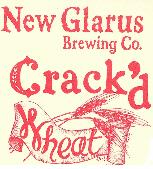Friday night I co-taught a wonderful class at Cooks of Crocus Hill in St. Paul. My co-presenters for the class were Chef Mike Shannon and Level III Sommelier Leslee Miller. Thirty-six guests were treated to a five-course meal of grilled and smoked delights each paired with either a beer or a wine. The final two courses were paired with both. As we ate and drank our way through the deliciousness the three of us traded off explaining  the pairings, offering up knowledge, and weaving tales about our respective passions.
the pairings, offering up knowledge, and weaving tales about our respective passions.
As we offered our introductions, guests enjoyed a light, sparkling, wine from Portugal. Famega Vinho Verde was a delicious white with a gentle touch of spritz and fantastic strawberry and pear fruit. I had to comment when Leslee mentioned that its 9.5% ABV made it a “low-alcohol wine that you could drink quite a bit of in an evening.” Coming from the world of beer, when we get above 8% we start talking about strong beers that have to be consumed in moderation.
The first dish that Chef Mike offered up was a twist on the traditional Cobb salad with lightly sauced pulled pork in place of the chicken. I paired this with Weihenstephaner Hefe Weissbier. Hefewizen pairs well with egg and cured meats, so it was a natural with the boiled egg and bacon on the salad. My main concern was that it wouldn’t stand up to the pulled pork. Guests however commented that the spicy yeast character of the beer really pulled out the flavors of the pork while the full wheaty/yeasty mouthfeel was able to hold its own against it.
The next course was a smoked salmon pizza with Asiago cheese. Leslee paired this with Croatian Korta Katarina Plavac Mali Rosé. This was another light, fruity wine with strawberry and rhubarb notes. It managed to stand up well to the assertive Asiago cheese and the smoked salmon brought out smoky notes in the wine that were not there when tasted alone.
brought out smoky notes in the wine that were not there when tasted alone.
The next course was mine to pair, a grilled Jamaican jerk chicken with a fruity/spicy Caribbean slaw. I paired this with Meantime IPA. The citrus and stone fruit flavors played well with the fruit of the slaw while the hops brought out the spice. This is a balanced English IPA with enough malt to knock heat back again on the way down.
After a short break we returned for the dish that I was really anticipating, a middle-eastern seasoned lamb chop with tomatoes and chick peas. Both Leslee and I took this one on and both pairings were possibly the best of the night. Leslee poured 2004 Il Poggione Brunello di Montalcino. This big, Italian red made with 100% Sangiovese grapes had intense dark fruity flavors and spice notes that stood up to the well-seasoned lamb, while tannins in the finish swept away the fat. I paired this dish with Ovni Ale Biére de Garde from Flat Earth Brewing in St. Paul. Caramel, toast, and spicy hops in this beer was another perfect match with the similar flavors in the lamb. Both the wine and the beer were perfect with the dish.
The desert was cheesecake with a sour cherry sauce. I went for Lindemans Kriek with this one. The sweet and sour cherry beer matched the cheesecake flavor for flavor. Leslee chose Schlink Haus Dornfelder, German Sweet Wine. Sweet, but not too sweet, and loaded with cherry fruit notes, this was another great match.
Three hours, five courses, and eight pours after we began a satisfied crowd filtered out of the upstairs kitchen space at Cooks. I had a blast and I believe the guests did as well. I hope to teach another course with Leslee and Mike soon. Thanks to all who came.

 I recently heard a
I recently heard a 


